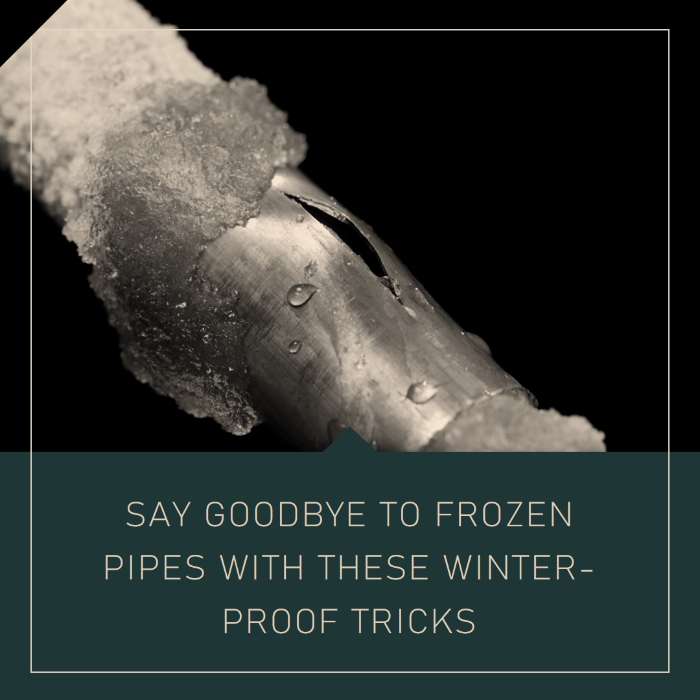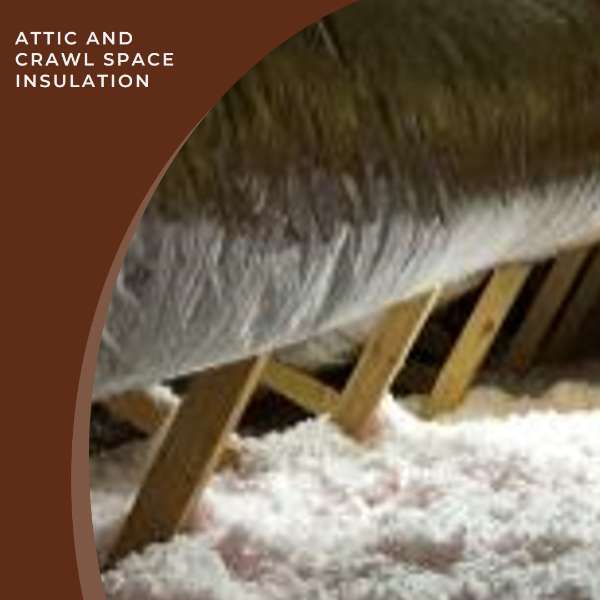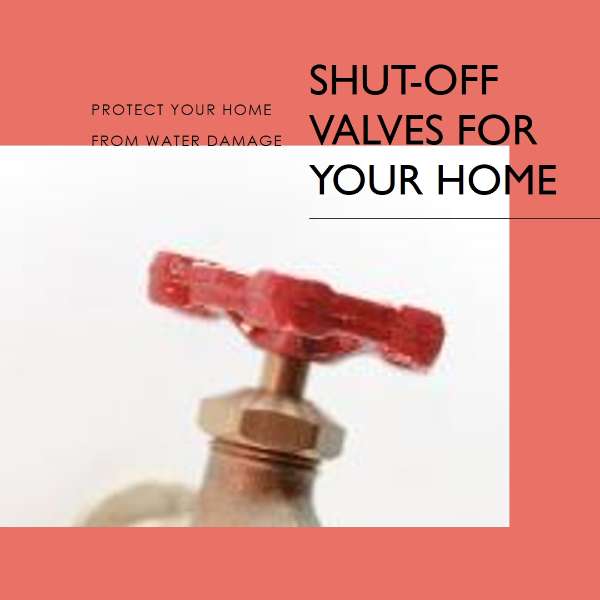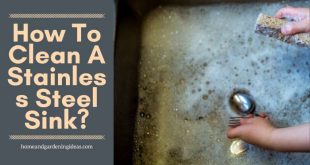Say Goodbye to Frozen Pipes with These Winter-Proof Tricks
As the winter season approaches, ensuring that your pipes remain free from freezing issues becomes crucial. Frozen pipes can cause significant damage and inconvenience, leading to costly repairs. To prevent such problems, it’s essential to employ various preventive measures and strategies. Let’s delve into effective methods to safeguard your pipes from freezing during cold weather.
1. Maintaining Optimal Pipe Conditions
a. Keep Pipes Warm:
- Utilize UL-endorsed tape with a thermostat, specifically designed to prevent freezing. This tape helps maintain a consistent temperature around the pipes without causing damage.
- Insulate water pipes using foam rubber or other insulating materials to minimize heat loss. Leaving cabinet doors open in areas with plumbing can allow warm air circulation, further preventing freezing issues.
b. Ensuring Continuous Water Flow:
- During power outages or extremely low temperatures, let faucets drip slowly to maintain water flow. This continuous trickle prevents water from stagnating within the pipes and reduces the risk of freezing.
- Consider installing a thermal convection-powered hot water recirculation valve to circulate warm water through the pipes efficiently.
2. Implementing Heating Techniques
a. Sealing Gaps and Cracks:
- Identify and seal any gaps, cracks, or holes near pipes that allow cold air to enter. Using caulking materials effectively blocks these openings, minimizing exposure to freezing temperatures.
b. Employing Temperature Monitoring Devices:
- Consider using devices like Redy Temp, equipped with internal temperature probes to monitor water temperature within pipes. These devices can automatically heat the pipes when temperatures drop below the set threshold, ensuring consistent warmth and preventing freezing.
c. Installing Thermostats:
- Maintain a stable indoor temperature using thermostats. Consistent heating within your property helps safeguard pipes from freezing by keeping the environment adequately warm.
3. Draining and Inspecting Water Lines
a. Proper Shutdown Procedures:
- Identify the main water supply and turn it off to drain water lines effectively. Additionally, shut off secondary water supplies to prevent water from entering the pipes.
- Conduct a thorough inspection of supply lines for any signs of damage such as cracks, leaks, or rust. Treat sump pumps and consider adding a backup battery to tackle power failures effectively.
4. Thawing Frozen Pipes
a. Locating and Thawing Frozen Areas:
- Identify areas prone to freezing by monitoring pipe temperatures during extremely cold weather. Apply heat using methods like electric heaters or heat lamps to thaw frozen sections carefully.
5. Insulation and External Measures
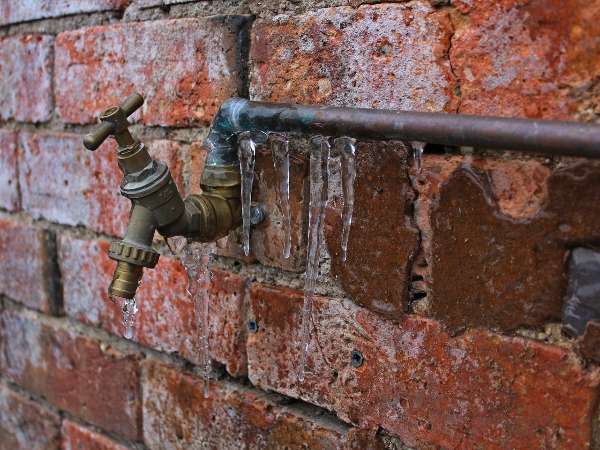
a. Outdoor Pipe Protection:
- Insulate outdoor pipes, faucets, and spigots using specialized covers or insulating materials designed for outdoor use. This shields them from frigid temperatures and reduces the risk of freezing.
- Disconnect and drain garden hoses, and shut off outdoor water sources to prevent water from accumulating and freezing within the pipes.
b. Attic and Crawl Space Insulation:
- Ensure adequate insulation in attics, crawl spaces, and basements to maintain warmer temperatures around pipes located in these areas. Proper insulation helps prevent heat loss and keeps these spaces above freezing temperatures.
6. Precautions During Vacations or Extended Absences
a. Maintain Minimal Heating:
- If leaving your home for an extended period during winter, maintain a minimum level of heating to prevent pipes from freezing. Set the thermostat to at least 55°F (13°C) to ensure the interior remains warm enough to prevent freezing.
b. Enlist Neighbor or Professional Help:
- Request a neighbor, friend, or professional caretaker to check on your property periodically if you’re away. Instruct them to inspect for any signs of freezing or issues with the plumbing system.
7. Emergency Preparedness
a. Know the Location of Shut-Off Valves:
- Familiarize yourself with the locations of main and secondary shut-off valves in case of emergencies. Being able to quickly shut off the water supply can prevent extensive damage if a pipe does freeze and burst.
b. Emergency Thawing Techniques:
- In case of sudden freezing, use portable heating devices like hairdryers or portable heaters (with caution) to thaw frozen pipes. Apply heat gently and gradually to avoid damage.
Conclusion:
By implementing these additional measures, such as protecting outdoor pipes, ensuring proper insulation, taking precautions during absences, and preparing for emergencies, you further fortify your efforts to prevent frozen pipes during the winter season. A combination of proactive steps, regular maintenance, and preparedness significantly reduces the risk of pipe freezing, safeguarding your property and minimizing potential damage.
 Home and Gardening Ideas At home and Gardening ideas we believe inspiring readers about homesteading, self sufficiency
Home and Gardening Ideas At home and Gardening ideas we believe inspiring readers about homesteading, self sufficiency
